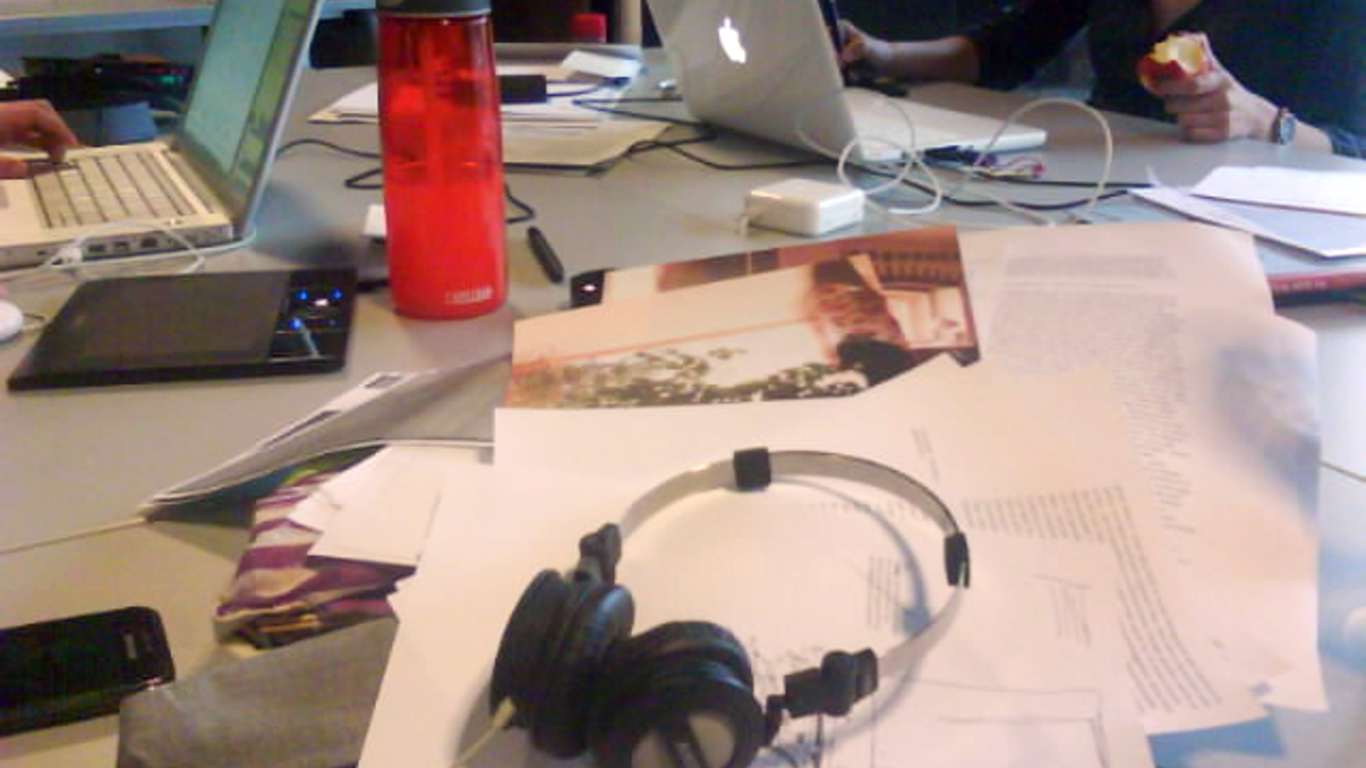Wie gestaltet man Informationen so, dass sie vom jeweiligen Rezipienten ohne Hindernisse aufgenommen werden können?
Auf welche Details kommt es beim Design typografischer Informationen an, um komplexe Sachverhalte übersichtlich und allgemein verständlich zu gestalten? ¶ In Zeiten einer ständig steigenden Informationsmenge sind solche Fragen für das Grafikdesign von zentraler Bedeutung. Informationsdesign umfasst dabei nicht nur den »klassischen« Bereich der Leit- und Orientierungssysteme, auch bei der Gestaltung von Büchern sind Überlegungen zur klar strukturierten Informationsvermittlung von großer Bedeutung.¶ Christian Mariacher beschäftigt sich seit Jahren intensiv mit Fragen zeitgemäßen, praktikablen Informationsdesigns. Es ist ihm gelungen, seinen Professor von der renommierten University of Reading für diesen Workshop zu gewinnen. Teile des Workshops leitet Rob Waller und tut dies in englischer Sprache.


Christian Mariacher, geboren in Innsbruck, Studium an der Metropolitan University, Manchester und University of Reading (MA). Freiberufliche Tätigkeit in Wien, Bozen und Stuttgart, 2005 Gründung des eigenen Ateliers für Informationsdesign und Buchgestaltung in Innsbruck. Unterricht und Gastvorträge an verschiedenen Schulen. Zahlreiche Arbeiten, u.a. Orientierungssystem für das Tiroler Landhaus (2009, Auszeichnung bei den internationalen »Sign Design Awards« in London 2009), Buch »Gregor Sailer: Ladiz« (2009, nominiert für Deutschen Fotobuchpreis), Buch «Industrielle Bildwelten«» (2007), »Book of Common Prayer« (2006, ausgezeichnet bei den »Schönsten Büchern Österreichs«).
Rob Waller, has over thirty years’ experience of research and practice in information design: the structuring and communicating of complex information. In his earlier academic career, at the Open University, he was part of the multidisciplinary research effort in the UK in the 1970s and 80s, which brought designers, psychologists and others together in joint research programmes. His research still focuses on the relationship of graphic design to language and comprehension. In 1988 Rob started Information Design Unit, a consultancy that, with business partner David Lewis, he built into the leading UK information design company, specialising in personalised customer communications, wayfinding, user research and management communications. IDU’s client list included numerous well-known brands in the financial services, telecommunications, energy and retail sectors, as well as many government departments, hospitals and museums. In 2001 the business was sold to WPP, one of the world’s largest marketing services groups, and became part of the global branding agency Enterprise IG. In 2007 Rob returned to an academic career at the University of Reading, where he is Professor of Information Design. The Department of Typography & Graphic Communication has a strong reputation for research, scholarship and teaching, and Rob teaches postgraduate students at PhD and MA level. He is developing a new multidisciplinary research centre, the Simplification Centre, which is an authoritative source of expertise and evidence on clear communications, for government and private sector organisations. Rob has also been closely associated with the creation of an institutional framework for the development of information design. In 1979 he founded and edited Information Design Journal, which was instrumental in defining the term itself; he co-founded the Information Design Association, which he currently chairs; and he has co-organised a series of Information Design Conferences from 1982 to the present day.
Kursinhalte im Detail
Friday, 13-18h plus evening session – Discovery
- Briefing
- Talk on Lynch: cities easy/difficult to read, edges etc
- Practical work: small groups, user scenarios, go out, talk to users, photo journey (what do I encounter: map: rational + emotional relation to things, test: how do people give directions, landmarks)
- Evening session, Rob, Ch: people present results on beamer, feedback from Rob, drink beer (Rob, Ch)
Saturday, 9-18h – Creative
- Talk on constituents/wayfinding system: according to various books (NHS, Mollerup, Smitshuijzen)
- Practical work: do signing, where positioned, sketch more than one solution, labelling, consider leisure/branding; supplied with: maps, Illustrator-data, goal for Sunday: work out one sign in detail
- Talk on Landhaus
Sunday, 10-15h (might end later) – Making
- Work out one sign in detail
- Rob will give feedback
- no break: bring sandwiches
Zielgruppe, Voraussetzungen
TypografInnen und GestalterInnen von Büchern, Katalogen, Leit- und Orientierungssystemen — alle, die komplexe Sachverhalte typografisch darstellen. Einschlägige Kenntnisse im Umgang mit Typografie sind unbedingt erforderlich!
Und außerdem sehr wichtig …
- Zeichenmaterialien: Papier, Transparentpapier, Bleistift, Fineliner, dickerer Filzstift und sonstiges Zeichengerät
- Eigener Laptop (halbwegs zeitgemäß) mit den für die Entwurfsarbeit benötigten Anwendungsprogrammen (InDesign, XPress).
